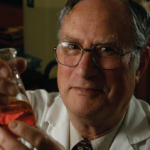
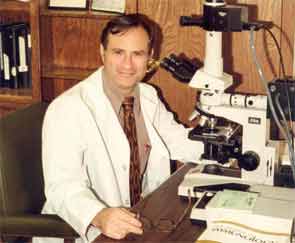
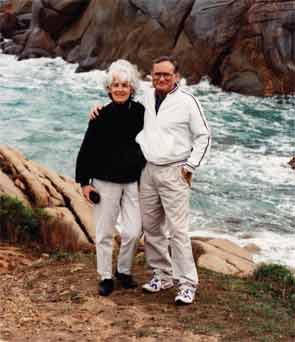
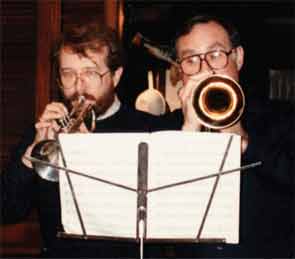
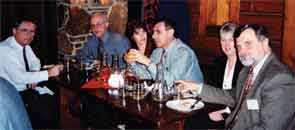
“Come to Oklahoma and have a good time!” Those were the words that persuaded John B. Harley, MD, PhD, to join Morris (“Moe”) Reichlin, MD, as a faculty member in Oklahoma City in the early 1980s, where Dr. Reichlin was busy establishing what would become a well-recognized rheumatology training program at the University of Oklahoma Health Sciences Center, as well as a world-class research program and clinical autoantibody testing facility at the Oklahoma Medical Research Foundation (OMRF). Dr. Harley, currently chief of pediatric rheumatology at the University of Cincinnati Children’s Hospital Medical Center, explains: “What Moe meant by ‘have a good time,’ of course, was to really enjoy the science.”
Dr. Reichlin’s infectious enthusiasm for conducting research has drawn countless pre- and postdoctoral fellows and colleagues to OMRF since 1981, when he and his wife Marianne and colleague Ira N. Targoff, MD, packed up their lab equipment and moved from Buffalo, N.Y., to Oklahoma City. Now a professor emeritus and affiliate of OMRF Arthritis and Clinical Immunology Research Program, Dr. Reichlin is known foremost in rheumatology and immunology circles as one of the discoverers of anti-Ro (SSA) antibodies—and as the man who put Oklahoma rheumatology research on the map.1 From its origins in 1981, the program has expanded from an initial 25 to 30, to a staff of nearly 200 individuals. “We had great success with our science, both nationally and internationally,” says Dr. Harley. “We worked really hard and, at the same time, we had a good time.”
Dr. Reichlin has been motivated during his more than five-decade-long, award-winning career by the quest to define the antigenic targets of autoimmunity in people with systemic lupus erythematosus (SLE), inflammatory myopathies, polymyositis, and dermatomyositis. Throughout that time, Dr. Reichlin also remained intimate with clinical work and teaching. “Patients were my guideline, in disease classification or characterization,” he says. “If it meant something to the patient, then it meant something to me, and I pursued it.”
A Path to Immunology
Dr. Reichlin says he always knew he would go into medicine. As an undergraduate, he majored in chemistry and believes it may have been his mother who had initially urged him to become a physician (“She was a very strong person,” he said). In the 1960s, he studied the immunochemical properties of hemoproteins, particularly hemoglobin and cytochrome c, honing his laboratory skills in the graduate department of biochemistry at Brandeis in Boston, and as a postdoctoral fellow of the National Institutes of Health (NIH) in biochemistry at the University of Rome.2-4 He developed reagents that could help distinguish a single amino acid difference in protein structure.5
